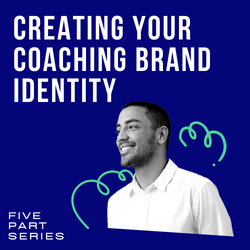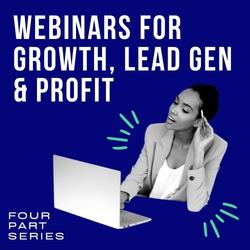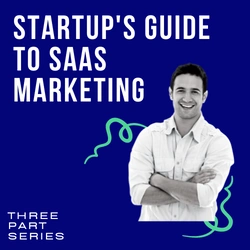A SERVERWISE THREE PART SERIES
The Startup's Guide To SaaS Marketing: 3 Keys To Know
Times have changed. The days of marketing your new business using newspaper classified ads are over. Now, we have the Facebook Newsfeed.
Not that long ago, when a customer signed up for a free trial (including Netflix or AOL), you shipped a disc to their address. Now, we have instant free trial subscription sign-ups.
And while the marketing has changed, the approaches used two decades prior are just as relevant today – and just as useful. In fact, you can use these same proven tactics to accelerate your software-as-a-service growth starting today.
The Dream 100 Strategy
A strategy developed by Chet Holmes nearly 15 years ago and used by software companies including SAS to grow exponentially.
The Dream 100 is that you sit down and dream up your 100 most ideal buyer personas, your best customers, and you reverse engineer a marketing strategy to target them.
You’re going to design a marketing program to track down and target your dream 100 clients constantly and relentlessly until they buy your product or service.
The goal is a simple one: you take ideal buyers through the process of recognizing your business. “I’ve never heard of that company” to “What is this company I keep hearing about?” and finally to “I’ve heard of that company too.” And the final step of, “I do business with that company.”
This is essentially how all marketing and sales strategies work in any industry, but it works particularly well for SaaS companies. It allows you to design an evergreen marketing strategy while keeping your dream 100 clients in mind and creating ad copy or content to hyper-target them until they buy from you.
Law of Category
About twenty years ago, Al Ries and Jack Trout debuted a new (at that time) twist on the well-known need to target your ads to your audience that they called the Law of the Category.
What these two marketers realized is that perception is everything, and people naturally seek out the market leader in any niche. And why wouldn’t they, surely the leader in a category has the best product or service to offer. These two gentlemen had a unique and at that time, rather earth-shattering idea, if your business isn’t the category leader simply create a new category that you can lead right away.
With the law of the category, the power of the message stands out and attracts buyers and attention almost right away.
The strategic narrative is if you’re going to enter a market, you either are entering it as the first in your new category, or you are entering with a wildly differentiated service than everyone else in that category.
And how do you do that? How do you go into a competitive category and differentiate yourself? There’s only one way and that’s through your message – the all-powerful narrative.
SaaS marketing is rarely about price. If your service is identical to the market leader with one major difference – your product costs a bit less, you’re fighting an uphill battle. SaaS users, primarily businesses, don’t focus on price. They focus on value.
People don't want cheaper; they want the right value and benefits for their needs.
So how do you get into a category that doesn’t yet and make sure people realize that they need your service? Through a differentiated message campaign by educating potential users of your stronger value – what benefits they will reap from your service, that puts you into a new category altogether.
You set up a new category, even within a broader category. And you use the features and benefits of your service that sets you apart as the reason you’re in a different category.
You’re telling potential customers that no one else can do everything for them that your service can do. Furthermore, you prove that, and you’ll start pulling users away from your competitors consistently.
The other benefit of strategically using the Law of Category is that you are presenting the image that you don’t consider those billion-dollar companies to be your competitors. This allows you to craft the perception that you’re above them, differentiated from them, and as such you can’t be directly compared to them.

Out Teach the Competition
Thirty years ago, renown marketing wizard Jay Abraham had an epiphany. He said not to outspend your competition on marketing but to out teach them instead.
By out-teaching the competition, you create an army of well-informed leads who see your business as the generous authority in your market. You can differentiate yourself and drive growth by educating your customers, which, in turn, will increase their trust and confidence in your brand.
Over time, this strategy of education will gain traction and result in scalable and predictable growth.
Jay taught that the cornerstone of your marketing plan should be to educate your client or customer. Of course, first you educate them on your service or product, but then you spread that education around. Identify several problems or issues that affect a considerable portion of your market, niche or industry and solve it. Educate through webinars, YouTube videos, Facebook, etc. Teach the solution and in doing so, you’re proving your authority and expertise and building customer engagement.
Closing Thoughts
We discussed three key marketing strategies that are, on average, 20 years old. And even though digital has changed a great deal of how we market and advertise, human beings have not changed. People still crave answers, easier and better lives, and the need to trust before they purchase.
Our tools and methods of contacting and targeting perspective buyers and persuading each to become a paying customer have evolved, but the roots are the same.
Now your SaaS business can build your Dream 100 list and execute around them all online through automated tools such as autoresponders, targeted social media ads and content marketing. And you can differentiate your service using the law of the category to set your offering above and out of reach of your competitors. Finally, your service solves a problem, but you know your customers have other problems you could also solve. Start educating and training your customers for free and in doing so they’ll develop confidence and trust in your brand and that will lead to growth in your SaaS market share.

It’s the sales page where the magic happens. This is the page that gives you a return on your marketing investment. It is on this page where we convert visitors to paying customers. Do you know the valuable elements of a high-converting sales page? You will soon. Keep Learning >

Content marketing is the backbone of the biggest success stories over the last decade. I’m referring to companies like Zomato, Canva, ThinkGeek, HootSuite and even Blendtec. It’s not surprising that so many brands are focusing on content marketing, given the average ROI is twice any other type of digital marketing. Keep Learning >



